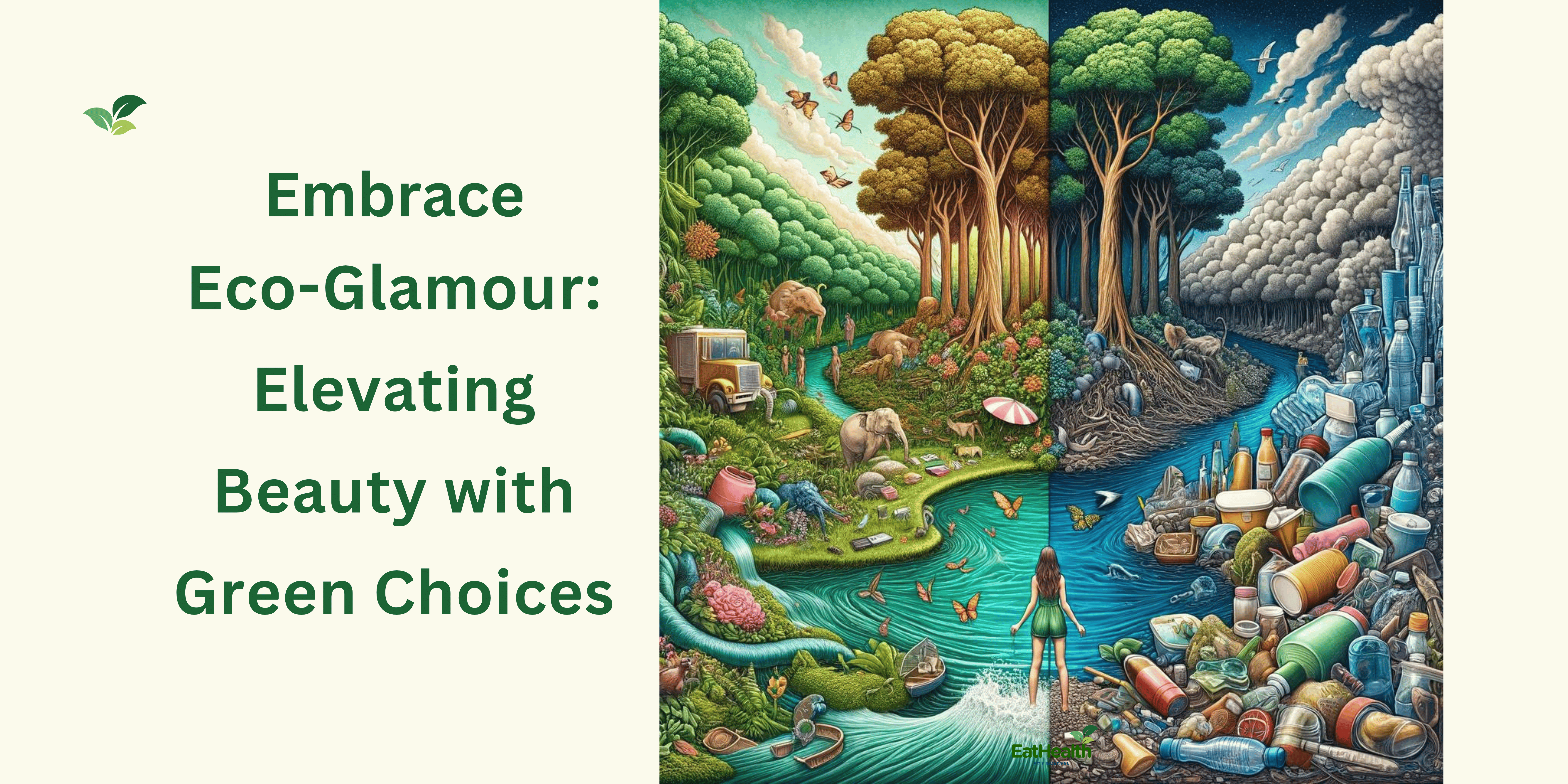Green Glam: How Beauty Choices Affect the Environment?
Embrace Eco-Glamour: Elevating Beauty with Green Choices
Green Glam: How Beauty Choices Affect the Environment
In today’s beauty industry, the pursuit of perfection often comes at a significant environmental cost. From excessive packaging and harmful chemicals to animal testing and carbon emissions, conventional beauty products contribute to various environmental issues. However, a growing movement towards green beauty offers hope for a more sustainable approach to personal care. This article explores the environmental impact of beauty choices and highlights the importance of transitioning to eco-friendly alternatives for a greener, more glamorous future.
The Environmental Impact of Beauty Products
The production, use, and disposal of beauty products have a range of environmental implications, including:
- Resource Depletion: Many beauty products rely on finite natural resources such as water, minerals, and petroleum-based ingredients, contributing to resource depletion and habitat destruction.
- Pollution: The manufacturing and disposal of beauty products release pollutants into the air, water, and soil, contributing to air and water pollution, as well as soil contamination.
- Waste Generation: The beauty industry generates a significant amount of packaging waste, including plastic bottles, jars, and tubes, which often end up in landfills or oceans, posing a threat to wildlife and ecosystems.
- Chemical Exposure: Conventional beauty products often contain a cocktail of synthetic chemicals, including preservatives, fragrances, and dyes, many of which can be harmful to human health and the environment.
- Animal Testing: Many beauty products are tested on animals to assess their safety, leading to animal suffering and ethical concerns, as well as environmental impacts associated with animal husbandry and testing facilities.
The Rise of Green Beauty
In response to growing awareness of these environmental issues, a movement towards green beauty has gained momentum in recent years. Green beauty focuses on using natural, non-toxic ingredients, sustainable packaging, and ethical production practices to minimize environmental harm and promote health and well-being. By choosing green beauty products, consumers can reduce their ecological footprint while still enjoying the benefits of effective and luxurious personal care.
Key Principles of Green Glam Beauty
Green Glam Beauty is guided by several key principles that prioritize environmental sustainability and human health:
- Natural Ingredients: Green beauty products are formulated with natural ingredients sourced from plants, minerals, and other renewable resources, avoiding synthetic chemicals and toxins that can harm both the environment and our bodies.
- Sustainable Packaging: Green Glam Beauty brands prioritize sustainable packaging options such as glass, aluminum, and biodegradable materials, minimizing plastic waste and promoting recycling and composting.
- Cruelty-Free Practices: Green Glam Beauty products are never tested on animals, and many brands are certified cruelty-free by organizations such as Leaping Bunny or PETA, ensuring that no animals are harmed in the production or testing process.
- Transparency and Accountability: Green Glam Beauty brands are transparent about their ingredients, sourcing practices, and production methods, allowing consumers to make informed choices and hold companies accountable for their environmental and ethical commitments.
- Ethical Sourcing: Green Glam Beauty brands prioritize ethical sourcing practices, ensuring that ingredients are sustainably harvested, fairly traded, and do not contribute to deforestation, habitat destruction, or human rights abuses.
Transitioning to Green Glam
Transitioning to green beauty doesn’t have to be overwhelming. Here are some practical tips for incorporating eco-friendly beauty choices into your routine:
- Read Labels: Take the time to read ingredient labels and look for products made with natural, organic ingredients and free from harmful chemicals such as parabens, phthalates, and sulfates.
- Choose Multipurpose Products: Opt for multipurpose beauty products such as coconut oil, shea butter, or tinted moisturizers with SPF, which can simplify your routine and reduce the number of products you use.
- Support Sustainable Brands: Look for green beauty brands that prioritize sustainability, transparency, and ethical practices. Research companies’ values, certifications, and commitments to ensure they align with your values.
- Reduce Packaging Waste: Choose products with minimal or recyclable packaging, and consider purchasing in bulk or refillable containers to reduce waste. Look for brands that offer recycling programs or take-back initiatives for empty containers.
- DIY Beauty: Experiment with making your beauty products at home using natural ingredients such as oils, clays, and essential oils. DIY recipes can be fun, cost-effective, and customizable to suit your unique skincare needs.
Conclusion
In conclusion, the choices we make in the realm of beauty have far-reaching implications for the environment and our health. By transitioning to green beauty practices, we can reduce our ecological footprint, minimize exposure to harmful chemicals, and support a more sustainable and ethical beauty industry. Whether it’s choosing natural ingredients, supporting cruelty-free brands, or reducing packaging waste, every small step towards green glam contributes to a brighter, greener future for generations to come.





